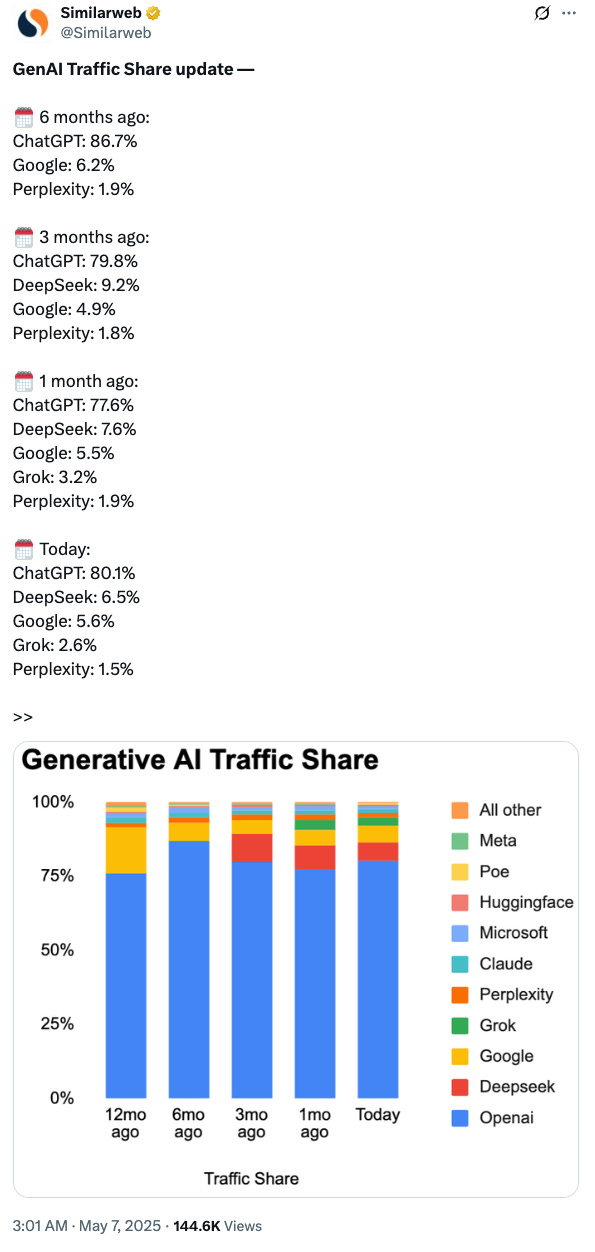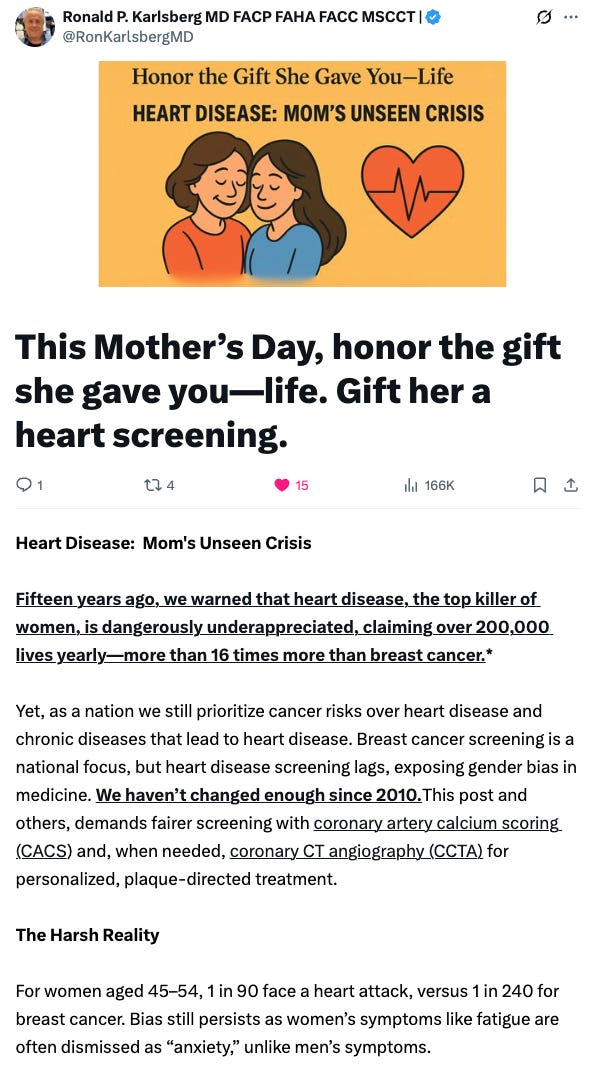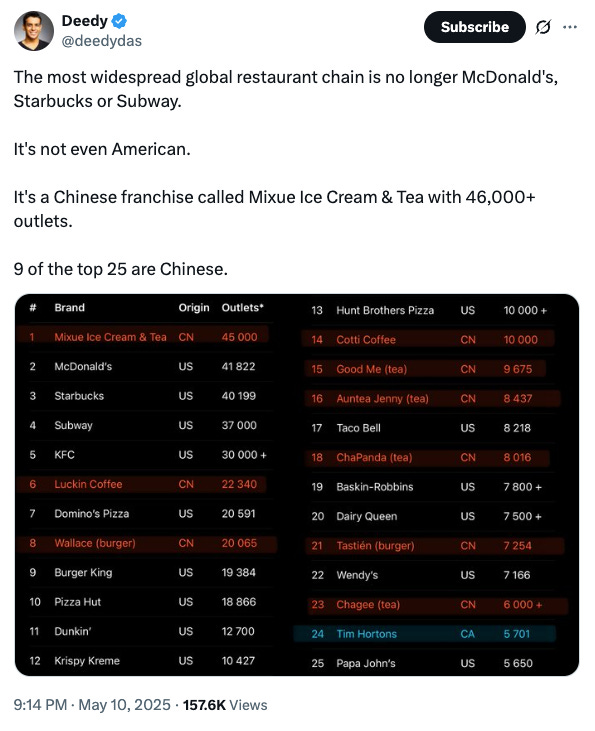What I Read This Week…
OpenAI and Microsoft re-negotiate partnership to support potential OpenAI IPO, Klarna reverts strategy of replacing customer service staff with AI chatbots, and a new cement-based battery
Watch All-In Interview with Secretary of the Interior Doug Burgum
Read our Deep Dive: A Primer on the Magnificent 7 (Part 1 - Nvidia and Tesla)
Read our Deep Dive: A Primer on Stablecoins
Read our Deep Dive: A Primer on Cryptocurrencies
Caught My Eye…
OpenAI and Microsoft are re-negotiating their partnership to support OpenAI’s shift to a public benefit corporation and its eventual IPO, while preserving Microsoft’s long-term access to OpenAI’s models and technology beyond their current agreement. The restructuring, adopted last week, keeps OpenAI under nonprofit control but converts its business arm into a public benefit corporation, which would then allow it to raise capital with no ceiling on investor returns and issue equity. Under the original 2019 deal, Microsoft invested $1 billion for preferred access to OpenAI’s models through 2030 and a capped share of profits. That stake later grew to over $13 billion, giving Microsoft around 49% of OpenAI’s for-profit entity. The new terms would revise this by reducing Microsoft’s equity in exchange for extended IP rights and continued model access after 2030. For OpenAI, this unlocks more flexible fundraising options and clears a path to the public markets. For Microsoft, it locks in a long-term strategic position as OpenAI's preferred infrastructure and enterprise partner without needing to maintain majority ownership. The deal reflects how OpenAI, once reliant on Microsoft for funding and compute, now wants to evolve into a more independent entity capable of raising tens of billions from new investors. OpenAI is moving to capitalize on high AI valuations and its lead in the AI chatbot race, while Microsoft wants to secure access to the technology that it has already integrated into Azure, Copilot, and its enterprise stack.
Klarna, the buy-now-pay-later firm, is reverting its 2024 strategy of replacing customer service staff with AI chatbots after discovering that full automation degraded service quality. While the AI system resolved two-thirds of inquiries and cut average response times below two minutes, it consistently failed in edge cases, such as contested charges, identity verification issues, or emotionally sensitive refund disputes, where the language model often lacked tone, nuance, and the judgement of a human. Customers reported feeling trapped in scripted loops, with no clear path to a human, particularly when the AI misunderstood intent or gave canned and irrelevant responses. In response, Klarna started to rehire human agents and is piloting an Uber-like customer service model that pairs flexible labor with AI triage. So far, even a customer service chatbot, which should be the most native use case for generative AI, has proven unsuccessful in production – let alone enterprise applications where language models operate more as the cogs within the app and are even less tolerant of hallucinations. Despite billions in investment and early excitement around LLM-powered copilots and chat interfaces, most generative AI applications have struggled with the reliability associated with traditionally-programmed apps.
Researchers have developed a new cement-based material that doubles as a rechargeable battery, offering a way for buildings to store and deliver electrical energy directly through their structural components. The material uses metakaolin, a processed form of clay, as a geopolymer binder that, when combined with zinc and manganese dioxide electrodes, enables electrochemical energy storage with a capacity of about 3.3 watt-hours per liter. Unlike traditional cement, which is carbon-intensive and primarily useful for heat storage, this new formula supports efficient charging and discharging without triggering the unwanted chemical reactions that limited earlier cement battery designs. These energy-storing modules could be embedded in layers or compartments within a building’s walls or foundation, allowing them to function as both a power source and structural support. Current challenges include the formation of hydrogen gas bubbles during charging, which gradually damage the internal structure and reduce reliability. The material also tends to dry out during curing, which lowers its conductivity, but adding water to fix this could weaken its mechanical strength. The technology remains in an early research phase and will require further refinement before it can be adopted more widely in construction.
Other Reading
U.S. Opens Foreign Investments ‘Fast Track’ Days Before Trump Gulf Trip (Financial Times)
Bessent - “U.S, and China Made Substantial Progress in Trade Talks” (Bloomberg)
Lutnick - “We Expect a 10% Baseline Tariff For the Foreseeable Future” (The Hill)
All 2025 IPOs Around 70% More Than Same Time in 2024 (Stock Analysis)
In 2025, Venture Capital Can’t Pretend Everything is Fine Anymore (Pivot to AI)
Amazon Offers Peek at New Human Jobs in an AI Bot World (TechCrunch)
Nadella Bets Microsoft’s Copilots on A2A/MCP Interoperability (VentureBeat)
Google Agrees to Pay $1.4 Billion to Settle Privacy Lawsuits (NYTimes)
OpenAI's Enterprise Adoption Appears to be Accelerating (TechCrunch)
Alibaba’s Model Lets AI Learn to Google Itself, Reducing Training Costs by 88% (VentureBeat)
Even China's Cheapest Cars Could Absolutely Smoke Ours (InsideEVs)
U.S. Car Companies Are In A Billion-Dollar Software War (InsideEVs)
Coinbase Buys Deribit for $2.9B in Crypto’s Biggest Deal (Financial Times)
How much information is in DNA? (Dynomight)
On X…










In the other reading list, the vast majority require logging in to read the articles. This is tedious when done manually. I have not set up an AI agent to perform the login process. You have spoken about doing so on All-In pod, and I see why.
One of the articles had a readability ratio so low I stopped reading it. The ratio is the space used for text divided by the space used for advertisement. I accept the advertisement model of the internet, but the average ratio is tending toward unreasonable, which drives up paid subscription sites, which becomes tedious (see above).
This is what the end of the Roman Empire must have felt like, but now it is the Internet Empire that is sinking. I had fun while it lasted. But in your spare time, could you fix the internet as a service to humanity, please?
LLM prompts aren’t static inputs—they’re dynamic workflows.
The real value comes when prompts are tightly coupled with the business process, orchestration layers, and a clearly defined operating model.
As someone who specializes in prompt engineering, I’ve seen firsthand that it doesn’t make sense for tech or data science alone to “hold the pen.” Crafting prompts that truly deliver requires deep experience in building departments, defining roles, mapping procedures, and aligning with target operating models. That, in my view, is product strategy. Some tech orgs are still missing the bigger picture: prompts aren’t just language—they’re the engine of an integrated ecosystem.